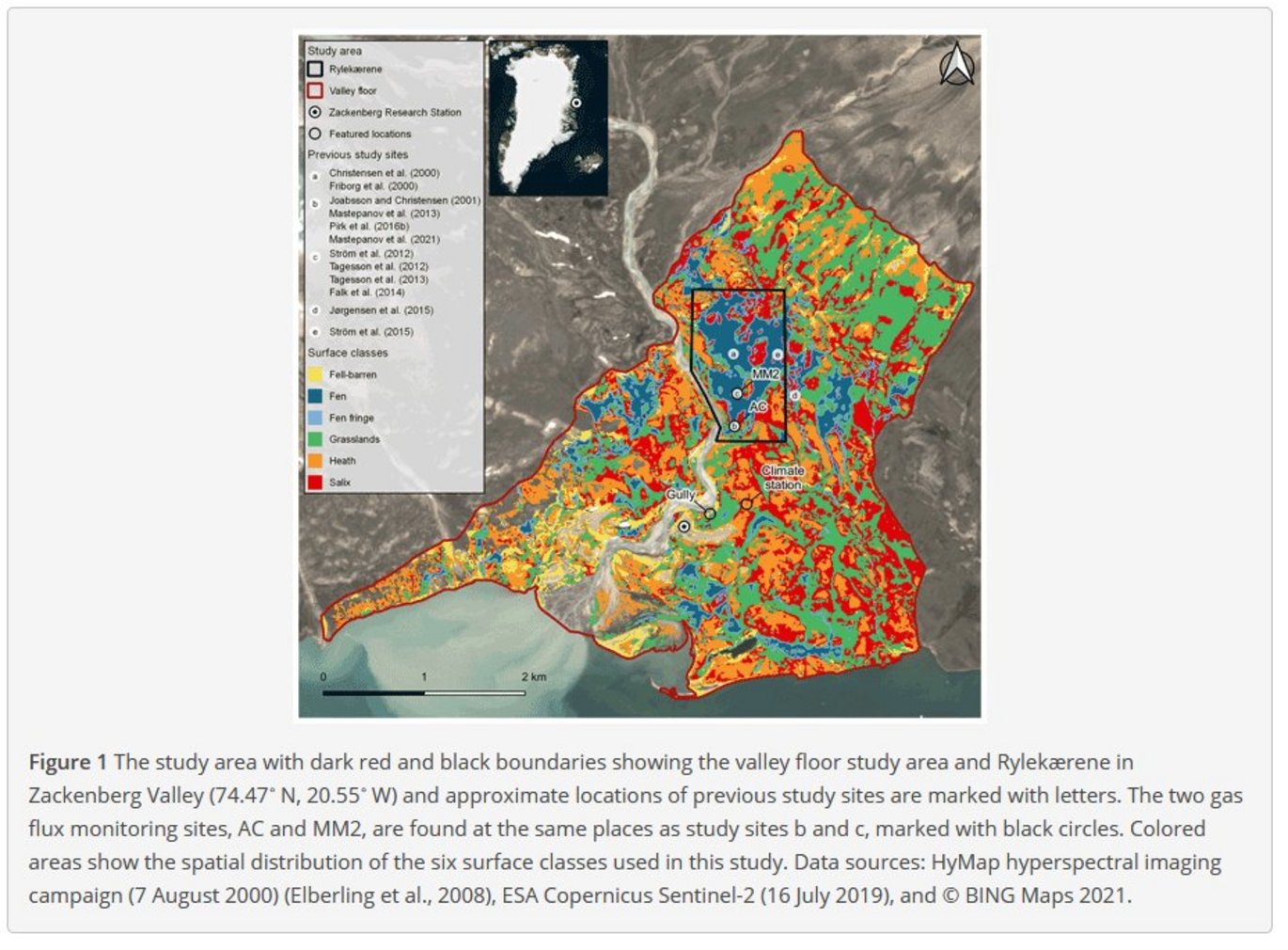Methane in Zackenberg Valley, NE Greenland: multidecadal growing season fluxes of a high-Arctic tundra
New publication by Johan H. Scheller, Mikhail Mastepanov, Hanne H. Christiansen, and Torben R. Christensen

Abstract:
The carbon balance of high-latitude terrestrial ecosystems plays an essential role in the atmospheric concentration of trace gases, including carbon dioxide (CO2) and methane (CH4). Increasing atmospheric methane levels have contributed to ∼ 20 % of the observed global warming since the pre-industrial era. Rising temperatures in the Arctic are expected to promote the release of methane from Arctic ecosystems. Still, existing methane flux measurement efforts are sparse and highly scattered, and further attempts to assess the landscape fluxes over multiple years are needed.
Here we combine multi-year July–August methane flux monitoring (2006–2019) from automated flux chambers in the central fens of Zackenberg Valley, northeast Greenland, with several flux measurement campaigns on the most common vegetation types in the valley to estimate the landscape fluxes over 14 years. Methane fluxes based on manual chamber measurements are available from campaigns in 1997, 1999–2000, and in shorter periods from 2007–2013 and were summarized in several published studies. The landscape fluxes are calculated for the entire valley floor and a smaller subsection of the valley floor, containing the productive fen area, Rylekærene.
When integrated for the valley floor, the estimated July–August landscape fluxes were low compared to the single previous estimate, while the landscape fluxes for Rylekærene were comparable to previous estimates. The valley floor was a net methane source during July–August, with estimated mean methane fluxes ranging from 0.18 to 0.67 mg m−2 h−1. The mean methane fluxes in the fen-rich Rylekærene were substantially higher, with fluxes ranging from 0.98 to 3.26 mg m−2 h−1.
A 2017–2018 erosion event indicates that some fen and grassland areas in the center of the valley are becoming unstable following pronounced fluvial erosion and a prolonged period of permafrost warming. Although such physical disturbance in the landscape can disrupt the current ecosystem–atmosphere flux patterns, even pronounced future erosion of ice-rich areas is unlikely to impact methane fluxes on a landscape scale significantly. Instead, projected changes in future climate in the valley play a more critical role. The results show that multi-year landscape methane fluxes are highly variable on a landscape scale and stress the need for long-term spatially distributed measurements in the Arctic.
